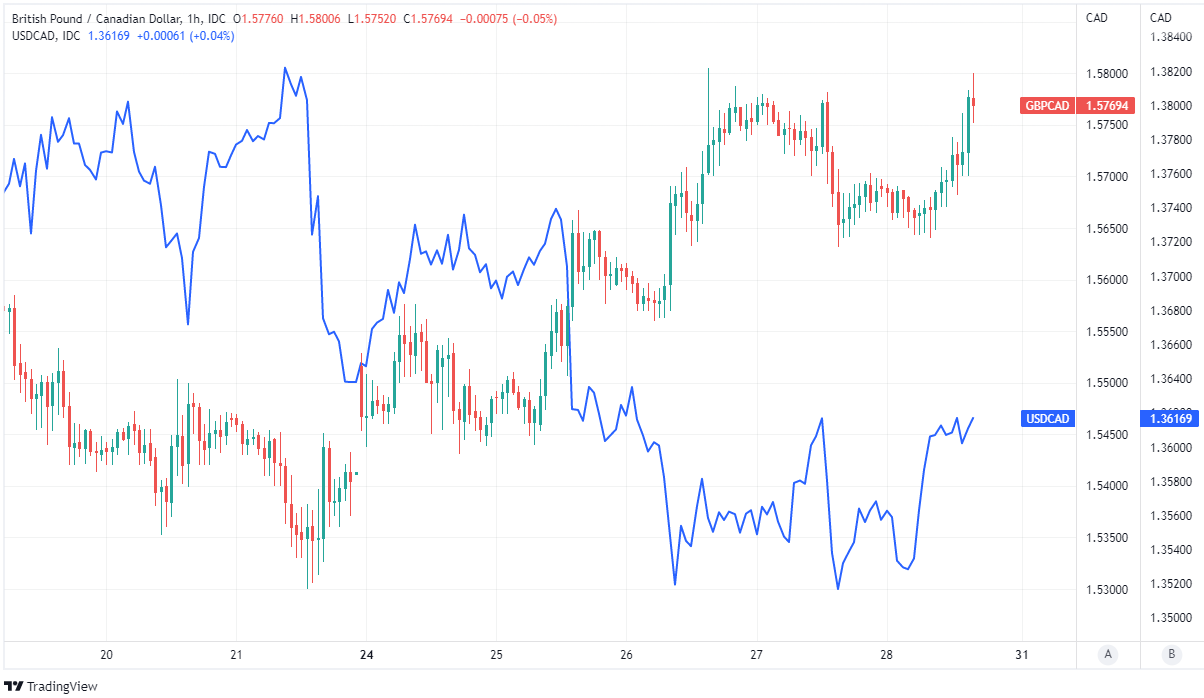Uncertainty Obscures Canadian Dollar Outlook as Economic Slowdown Looms
- Written by: James Skinner
-
"We expect the economy to eke out another quarter of positive growth in Q4. But with a moderate recession to follow in the first half of next year," - RBC Capital Markets.

Image © Adobe Stock
Canadian Dollar exchange rates were a mixed bag ahead of the weekend while the outlook for the Loonie has become less certain with the economy headed toward a slowdown and the Bank of Canada (BoC) now signalling that the end to its interest rate cycle is likely approaching.
The Loonie ceded ground to some currencies on Friday with GBP/CAD returning near to the week's highs but remained buoyant against others following a GDP report suggesting the local economy performed better than many economists had anticipated in August.
Monthly GDP growth came in at 0.1% for August when consensus among economists had looked for it to stall and Statistics Canada said in the same announcement that output also likely rose by another 0.1% in September, making for a 0.4% third quarter expansion.
However, much of that reflected increases in output from retail and wholesales trades that had been under pressure for months previously and which are subject to deteriorating outlooks while growth in the non-commercial activities of the government was also a key contributor in August.
"Consumer spending for services has remained resilient, but slower spending on goods - particularly in the U.S. (the world's largest consumer market) - is filtering through supply chains and cutting into expected growth in the manufacturing sector," said Nathan Janzen, assistant chief economist at RBC Capital Markets.
Above: Pound to Canadian Dollar rate shown at hourly intervals alongside USD/CAD. Click image for closer inspection.
"And the impact of central bank interest rate hikes to fight inflation have yet to fully feed through to broader economic activity. The early impact from those interest rate increases has been felt most directly in the housing market. But higher interest rates will continue to filter through to higher household debt servicing costs," he added on Friday.
Most notably, an established downturn in construction deepened during August and September while output from other key industries such as manufacturing and those concerned with natural resources also fell heavily in August.
Each of these industries is highly exposed to either the effect that rising interest rates could have on household demand or the deteriorating global economic outlook, which has darkened in response to the commodity price pressures fomented by the conflict in Ukraine and the interconnected central bank responses to rising inflation.
The Bank of Canada and Federal Reserve (Fed) have been the most aggressive developed world central banks when responding to that inflation while slowing the economy enough to reduce domestic inflation pressures has been the main objective of the interest rate response.
"While growth was fairly modest in Q3, it will probably need to slow further in Q4 and early 2023 to help bring inflation back down to target. This supports the notion that while the Bank of Canada is close to the end of its interest rate hiking cycle, it isn't done quite yet," writes Andrew Grantham, an economist at CIBC Capital Markets, in a review of Friday's data.
 Above: Pound to Canadian Dollar rate shown at daily intervals alongside USD/CAD. Click image for closer inspection.
Above: Pound to Canadian Dollar rate shown at daily intervals alongside USD/CAD. Click image for closer inspection.
The BoC has raised its interest rate six times since March this year, taking it up from 0.25% to 3.75% by October, and this has so far enabled the Canadian Dollar to outperform many other comparable currencies including the Pound.
However, with the BoC raising its cash rate by less than was expected by economists this Wednesday and warning that the economy could contract over the coming quarters, there is uncertainty over whether the Loonie will be able to sustain this year's outperformance going forward.
Much likely depends on how quickly Canadian inflation retreats back toward the BoC's 2% target as well as the extent to which interest rates and other factors impact the economy in the months and quarters ahead.
"We expect the economy to eke out another quarter of positive growth in Q4. But with a moderate recession to follow in the first half of next year," RBC's Janzen said Friday.
"Slower growth momentum was a key reason the BoC opted for a smaller-than-expected (but still large) 50 bp rate hike earlier this week. That could see the Bank of Canada further tapering its rate-hiking cycle later this year. But that is also still contingent on inflation showing further signs of easing," he added.












